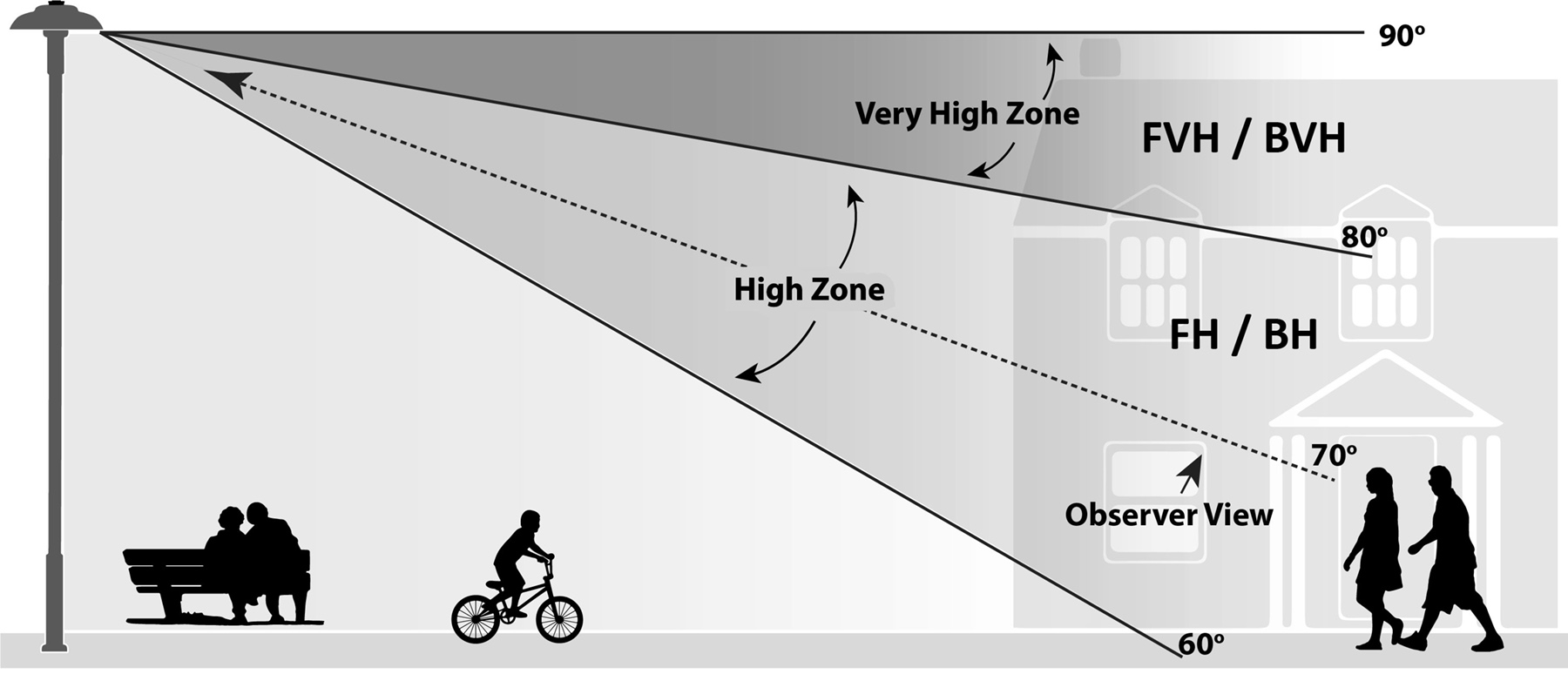Specifiers and designers go to great lengths to pick the appropriate luminaire, lumen package, optical configuration and shielding for a given project. However, there will inevitably be unanticipated conditions that result in light trespass, which will require special solutions.
Common situations where shielding might be required include: blocking light output behind a luminaire, in front of a luminaire, or to the back & side of the luminaire; for example on a Cul-de sac street. To address these situations, lighting professionals use supplemental shields that can be provided at the factory, or can be installed in the field.
The shielding types illustrated below represent typical light distribution, however; there is at times some minimal light intensity above the angle shown. We provide IES files for all of our products, so that you may review details regarding shield performance and calculate actual illumination values.
House Side Shield
Flush mounted House Side Shield commonly cuts light off at 1 times the mounting height behind the luminaire and 2¾ times the mounting height laterally

Front Side Shield
Flush mounted Front Side Shield commonly cuts light off at approximately 1½ times the mounting height in front of the luminaire (street side) and 2¼ times the mounting height laterally

Cul-de-Sac Shield
Flush mounted Cul-de-Sac Shield commonly cuts light off at 1 times the mounting height behind the luminaire, 1¾ in front, and 2¼ times the mounting height laterally.

80 Degree Cutoff Shield
One of the benefits of LED technology is the ability to deliver high angle light. However, in some applications this can cause discomfort glare, which can be shielded in the very high glare zone (above 80 degrees from nadir).

80 Degree Cutoff Shield mitigates high angle glare above 80 degrees from nadir and cuts
light off at 1½ times the mounting height behind and 2⅓ times the mounting height laterally.

Leotek offers multiple types of shielding
on each of its outdoor luminaire lines.
For more information on available shielding,
please refer to these product technical datasheets:
OTHER TOPICS:
Understanding Discomfort Glare
ADDITIONAL RESOURCES:
U.S. Department of Energy
Get the Facts: LED Street Lighting
American Medical Association (AMA)
AMA Adopts Guidance to Reduce Harm from High Intensity Street Lights